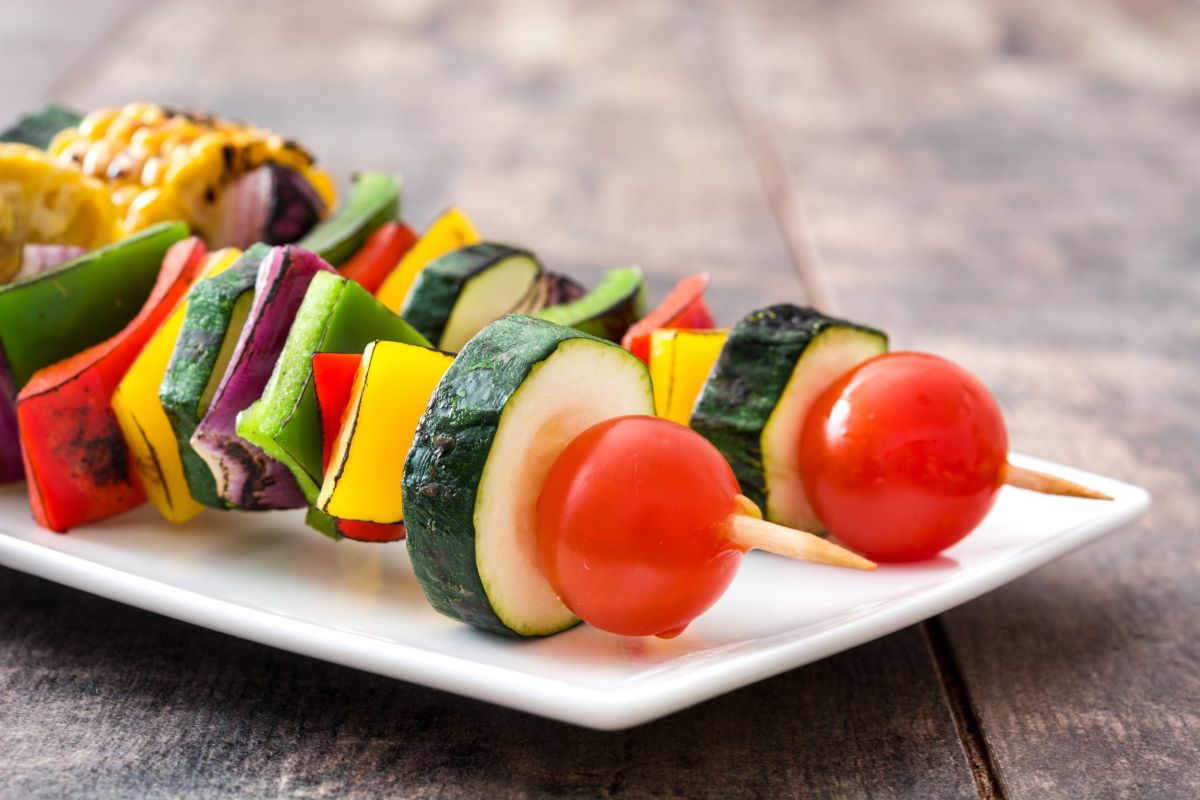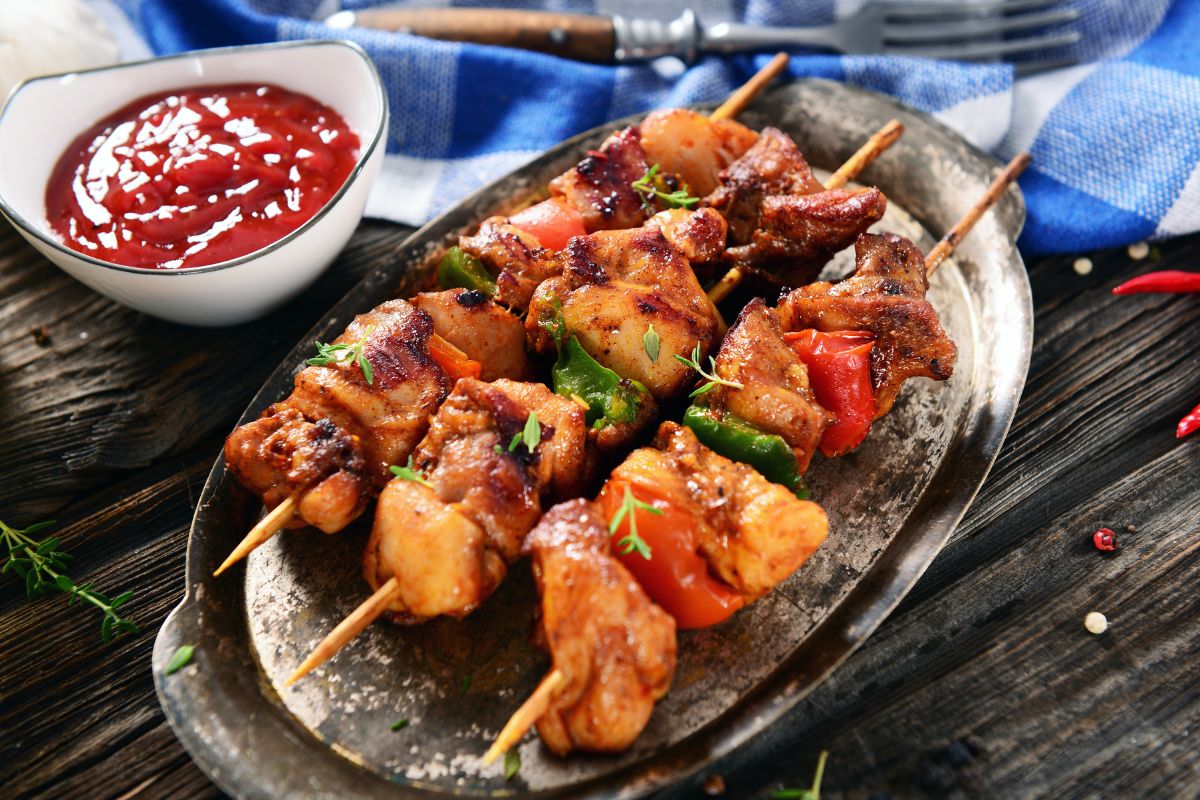From the many techniques involved in grilling, there is skewer grilling, which is unique for its flexibility and ease. It is one of the grilling methods that can be mastered by a skilled griller or beginner due to skewers recipes’ ability to enhance outdoor cooking skills.
Introduction to Skewer Grilling
Skewer grilling is the process of threading food onto sticks or rods and cooking it over an open flame or heat source. This approach provides even cooking and a delicious smoky flavor. Skewers, which can hold everything from delectable meats to vivid veggies, provide limitless options for unique and delicious meals.
Essential Skewer Grilling Tools
Having the correct tools is essential for flawless skewer grilling.
Choosing the Right Skewers
You begin by using the correct skewers. Metal skewers are just sturdily strong and reusable for heavier foods such as meats, while wooden skewers are disposable but perfectly suited for lighter meals. Wooden skewers are soaked in water for at least 30 minutes before being grilled to avoid scorching.
Essential Grilling Accessories
Investing in quality grilling gear improves the cooking experience. A dependable pair of tongs improves control while turning skewers, and a grill brush keeps the grilling surface clean. Furthermore, a meat thermometer is required to check the internal temperatures of meats to ensure they are cooked safely.
Ingredients for Skewers
The success of skewer grilling is heavily dependent on ingredient preparation.
Choose the Best Proteins
Using fresh, high-quality proteins creates the foundation for flavourful skewers. Choose sensitive parts that can be quickly cooked, such as chicken thighs, beef sirloin or shrimp.
Marination Techniques for Flavour Enhancement
Marinating flavors and tenderizing proteins. A balanced marinade usually contains an acid (such as lemon juice or vinegar), oil, and seasonings. Allow the proteins to marinate for at least 30 minutes, but don’t overmarinate, especially with acidic marinades, as this might change the texture.
Vegetables and Fruits to Grill

Vegetables and fruits bring color and nourishment to your skewers. Bell peppers, zucchini, cherry tomatoes, and red onions are also great alternatives. Fruits such as pineapple and peaches caramelize beautifully on the grill, providing a sweet counterpoint to savory dishes.
Cutting and Seasoning Tips
Cutting components uniformly ensures that they cook evenly. Aim for pieces that are between 1 and 1.5 inches in size. Vegetables and fruits taste better when lightly brushed with oil and seasoned with salt, pepper, or herbs.
Popular Skewer Recipes:
Let’s Explore different skewer recipes
Classic Chicken Souvlaki
Chicken souvlaki is a Greek favorite ready with marinated chicken pieces that are fried to perfection. The marinade is often made of olive oil, lemon juice, garlic, and oregano, creating it a zesty and sweet flavor.
Mediterranean Lamb Kebabs
Lamb kebabs are an iconic Middle Eastern meal. The lamb is juicy and tasty after being marinated in yogurt, garlic, cumin, and coriander. Grilling results in a smoky char that supports the seasoning.
Grilled prawns on pineapple skewers.
Shrimp and pineapple provide a delicious sweet and savoury contrast. A marinade of soy sauce, honey, and ginger intensifies the flavors, making these skewers a crowd favorite.
Vegetarian Halloumi and Vegetable Skewers
Halloumi cheese is an excellent meatless alternative when combined with veggies. Its firm structure cooks beautifully on the grill, and when mixed with vegetables like bell peppers and zucchini, it makes a pleasant and flavourful skewer.
Advanced Grilling Techniques
Improve your skewer grilling with these advanced techniques.
Managing Heat Zones On The Grill
Creating different heat zones on your grill provides more control. Direct heat is best for searing, but indirect heat cooks food more slowly. This method is very efficient on thicker meat slices and fragile parts.
Perfect Grill Marks
Warming up and cleaning the grill is important to achieve perfect grill markings. The skewers should be placed at a 45-degree angle to the grates; do not move them too fast. Rotate them 90 degrees after searing them to achieve a crosshatch pattern.
Safety Tips for Skewer Grilling
When grilling, safety should always be the priority.
Preventing Cross-contamination
Avoid cross-contamination by separating raw and cooked foods and using different cutting boards and utensils. Wash your hands extremely well after handling raw proteins.
Safe Internal Temperatures for Meats
Use a meat thermometer to determine interior temperatures. Poultry should be cooked to 165°F (74°C), although beef, hog, and lamb are safe at 145°F (63°C). Allow meats to rest momentarily after grilling to preserve the juices.
Serving and Presentation Ideas
Presentation improves the dining experience.
Combining Skewers with Complementary Sides
Serve the skewers with sides that complement the flavors. For instance, present chicken souvlaki with a cool tzatziki sauce and pita bread or lamb kebabs with a couscous salad.
Creative Plating Techniques
Place skewers on a plate and garnish them with fresh herbs or lemon wedges. It changes the colors and texture of skewers and therefore enhances the attractiveness of the dish.
Conclusion
Skewer grilling opens new avenues for gastronomy. You may make delectable and aesthetically beautiful foods with a scrumptious smell, that stirs the senses with proper instruments, careful preparation, and an emphasis on safety. So switch on the grill, collect your favorite foods, and enjoy the delicious journey of skewer grilling.
Tags: SkewersSkewers Recipes

